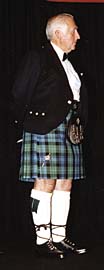
“I hope that some of the refrigerants currently in use will continue as refrigerants, but I’m not holding my breath,” said S. Forbes Pearson, president and CEO of Star Refrigeration, headquartered in Glasgow, Scotland.
His address keynoted a gathering of hundreds of researchers and engineers from throughout the world at the 21st International Congress of Refrigeration (ICR), held by the International Institute of Refrigeration (IIR).
Pearson’s basic charge was that the industry’s record with such “synthetic” refrigerants as CFCs, HCFCs, and HFCs “is not good.” Noting that CFCs and HCFCs are already being phased out, he said HFCs are coming under attack as well, from both environmental groups and some governments.
“Atmospheric concentrations of 134a are rising exponentially because of automotive air conditioning [leaks]; and supermarkets [which use HFCs 404A and 507] have experienced refrigerant loses of 30 percent annually.” Pearson said better containment could temper critics, but the only really leak-tight systems are those that are factory-sealed and can’t be opened for servicing, such as window air conditioners and domestic refrigerators.
He said his focus on CO2 came about because it is a natural refrigerant with no ozone depletion potential or global warming potential. “CO2 as a refrigerant by itself can be ruled out because of low efficiency associated with low critical temperature,” he said. “But it can be efficient in cascade systems along with another refrigerant such as ammonia.”
Ironically, he partially blamed the current learning curve for CO2 on the industry shifting toward CFCs in the 1930s. He said CO2 was starting to gain favor when CFCs became the industry standard. “CO2 would have been developed more quickly 50 years ago.”
He said one current problem in getting CO2 interest restarted is a lack of components. “We can’t buy a compressor that will pump high enough pressure to allow for hot gas defrost.” For a CO2/ammonia system his company was involved in, that problem was overcome with the addition of a positive displacement pump.
His advocacy of halocarbons had some considerations. “If there is a long-term for halocarbons, it is restricted to factory-sealed systems [because of safety issues].” But he saw potential for such sealed systems used as part of secondary loop or distributed technology. In such cases he said research would be needed to improve efficiencies.
“We are in a time of transition in refrigeration,” he told the audience. “Such times are always interesting, painful, and dangerous. This is a time of challenge and opportunity.”
Pearson’s prediction concerning the future of HFCs was not necessarily shared by others at the conference. In fact, among the presenters of some 34 papers specifically related to CO2, many saw HFCs as remaining viable in the long term. They advocated CO2 being considered as an option, along with other natural refrigerants and HFCs.
Still others said that while HFCs could well be heading for phaseout in Europe, that may not be the case in the United States. One speaker referred to the situation as the “Atlantic Divide.”
Look for details on other developments at the ICR conference in upcoming issues of The News.
Publication date: 09/01/2003




